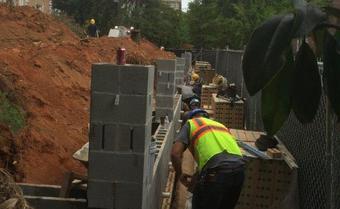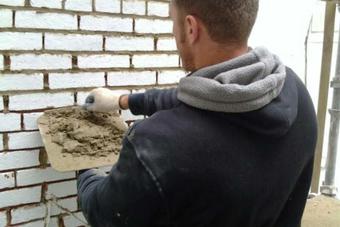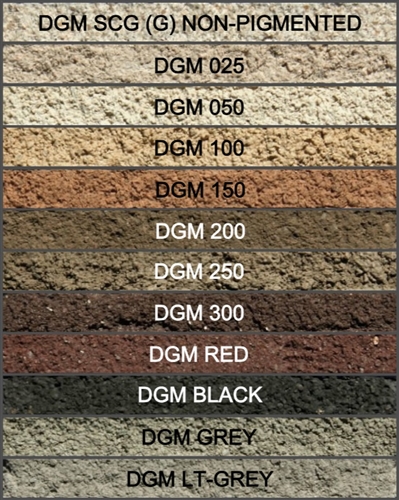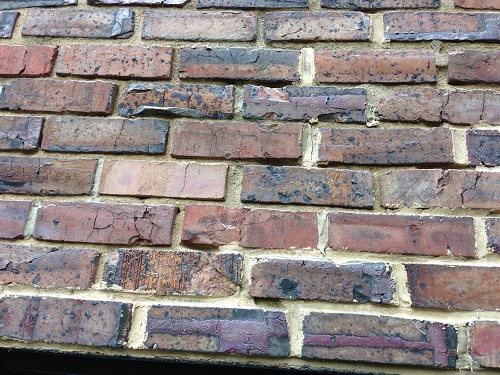Constructing and Restoration of Masonry
Contact Us For Free Estimate
Office. 240-714-4663 or Direct.(202) 492-4443
Mortar Joints Repointing Process
Repointing Mortar Matching Colors
It is essential that the mortar used for repointing have similar performance characteristics to the original mortar used in a building. Such performance characteristics include permeability, compressive strength, and coefficient of thermal expansion. For instance, if a soft lime-based mortar was originally used, the most appropriate repointing mortar is likely to also contain a large amount of lime. The use of Portland cement mortar for repointing on older buildings with soft masonry units can cause significant damage due to physical incompatibilities.
An architectural conservator can perform a mortar analysis in order to make recommendations for replacement mortar that is both physically and aesthetically compatible with the building.
Premix Natural Hydraulic Lime Mortar
9470 Annapolis Rd, Ste 415 Lanham MD 20706 Office. (240)714-4663 Direct. (202) 492-4443
Mortar joint repointing is the process of renewing the external part of mortar joints between bricks, stones, or other masonry units. Over time, mortar joints can deteriorate due to weathering, moisture, or other factors, leading to cracks, crumbling, or even complete loss of mortar. Repointing helps to restore the structural integrity and appearance of the masonry.
Here's how the process generally works:
1. Assessment: A thorough inspection of the masonry is conducted to assess the extent of damage and determine if repointing is necessary. This includes examining the condition of the mortar joints, the type of mortar used, and any underlying issues causing deterioration.
2. Preparation: The area to be repointed is prepared by removing the deteriorated mortar. This is typically done using tools like chisels, grinders, or mortar saws. Care is taken to avoid damaging the surrounding masonry units.
3. Cleaning: Once the old mortar is removed, the joints and surrounding area are cleaned to remove any debris, dust, or loose material. This ensures proper adhesion of the new mortar.
4. Mixing mortar: A suitable mortar mix is prepared, typically consisting of sand, cement, and sometimes lime, depending on the specific requirements of the project. The mortar mix should match the composition and appearance of the original mortar as closely as possible.
5. Application: The new mortar is applied to the prepared joints using a trowel or pointing tool. Care is taken to fill the joints completely and evenly, ensuring a strong bond with the surrounding masonry units.
6. Finishing: After the mortar is applied, excess mortar is carefully removed and the joints are tooled to achieve the desired finish. The type of tool used for finishing can vary depending on the desired aesthetic, such as concave or flush pointing.
7. Curing: The newly repointed joints need time to cure and harden. Depending on the type of mortar used, curing may involve keeping the area damp to prevent rapid drying and ensure proper strength development.
Overall, mortar joint repointing is a labor-intensive process that requires skill and attention to detail to achieve a durable and visually pleasing result. Properly executed repointing can extend the lifespan of masonry structures and maintain their historical or architectural integrity.
Using skilled masons for new construction or restoration projects is crucial for several reasons:
1. Quality of Workmanship: Skilled masons have the expertise to ensure that structures are built or restored to high standards of quality and durability. Their precise craftsmanship can result in structurally sound buildings that withstand the test of time.
2. Safety: Construction work involves inherent risks, and improperly constructed or restored buildings can pose safety hazards to occupants and the public. Skilled masons adhere to safety protocols and building codes, reducing the likelihood of accidents or structural failures.
3. Preservation of Historical Integrity: When restoring historical buildings or monuments, it's essential to maintain their architectural integrity and historical authenticity. Skilled masons have the knowledge and experience to use traditional materials and techniques, preserving the original character of the structure while ensuring its longevity.
4. Cost-Effectiveness: While skilled masons may command higher wages, their expertise often results in cost savings in the long run. Properly constructed or restored buildings require fewer repairs and maintenance over time, reducing overall lifecycle costs.
5. Aesthetic Considerations: Skilled masons possess an artistic eye and attention to detail, ensuring that new constructions blend harmoniously with their surroundings or that restoration projects faithfully recreate the original aesthetics of historical structures.
6. Efficiency and Timeliness: Experienced masons work efficiently and effectively, completing projects on time and within budget. Their proficiency reduces delays and ensures that construction or restoration projects progress smoothly.
7. Customer Satisfaction: Ultimately, using skilled masons leads to higher levels of customer satisfaction. Clients can trust that their projects are in capable hands, resulting in outcomes that meet or exceed their expectations.
In summary, skilled masons play a vital role in ensuring the quality, safety, authenticity, and efficiency of construction and restoration projects, making their expertise indispensable in the building industry.




